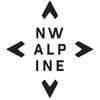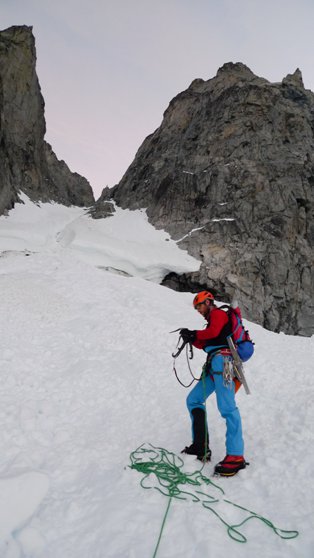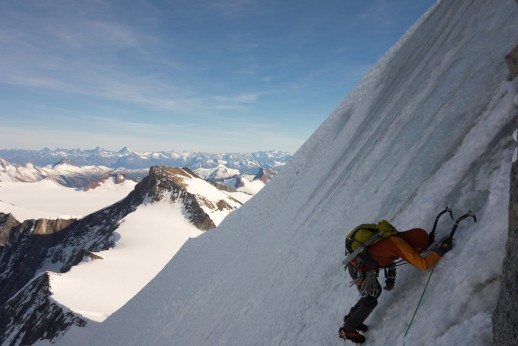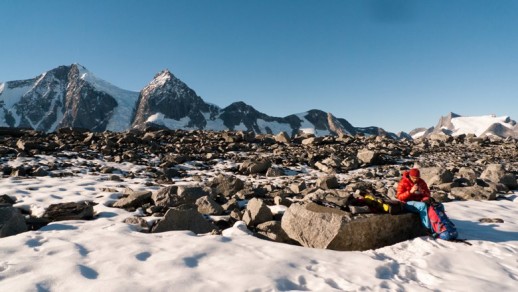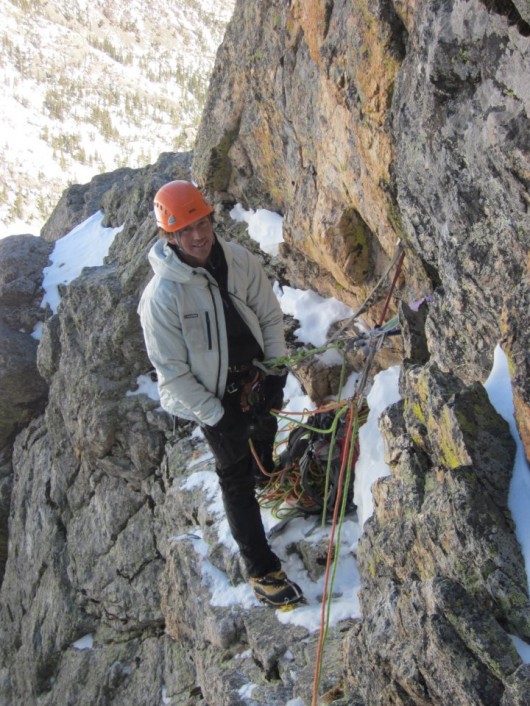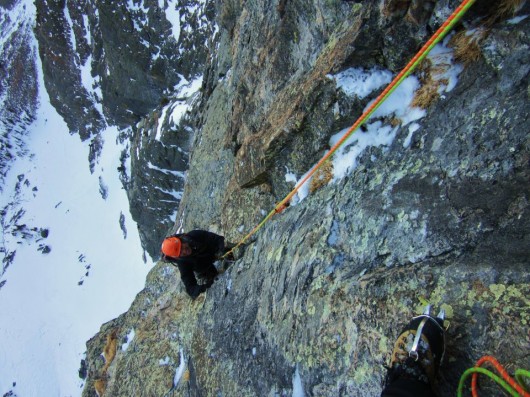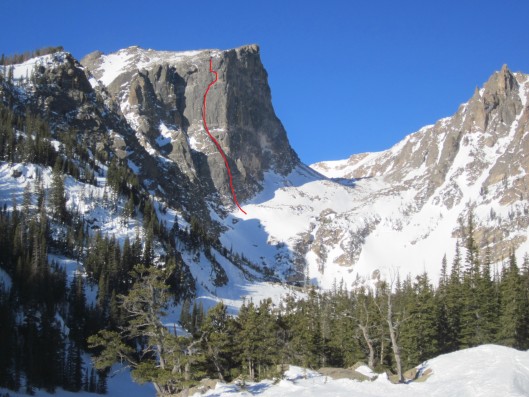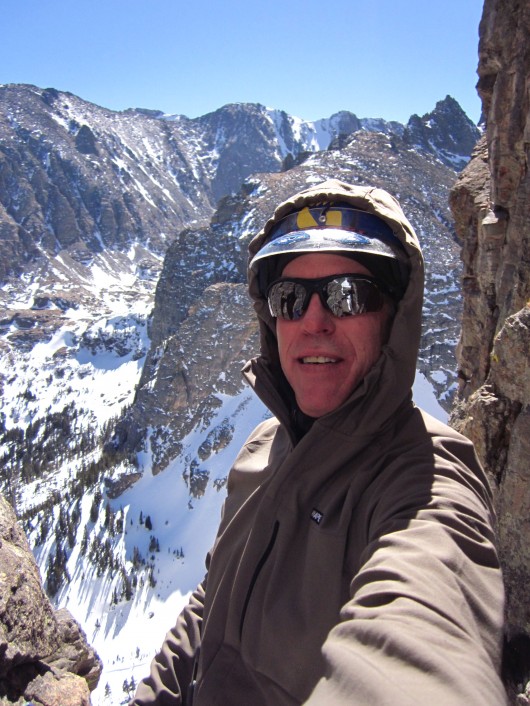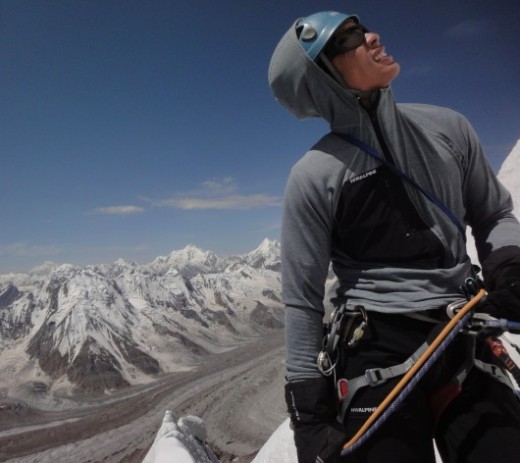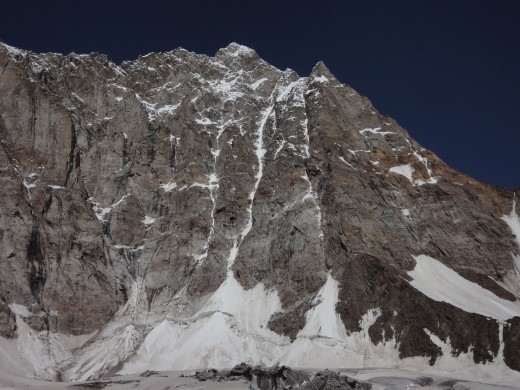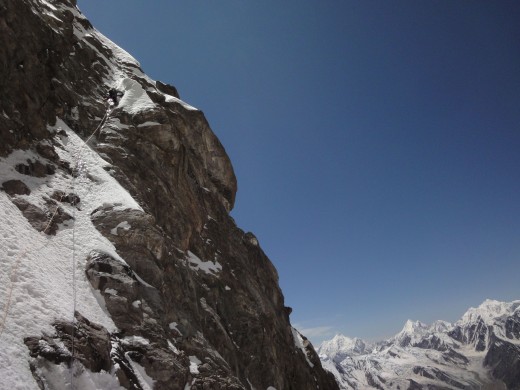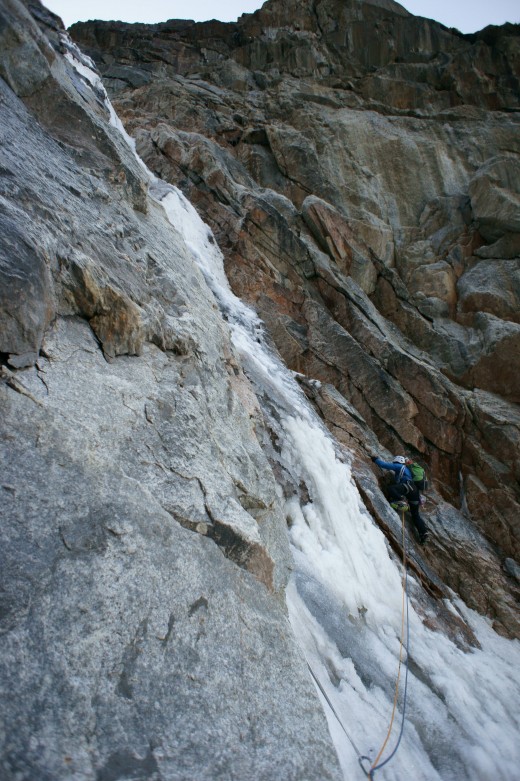Doug Shepherd reports on the FA of Can't Knock the Hustle, Mt. Burkett
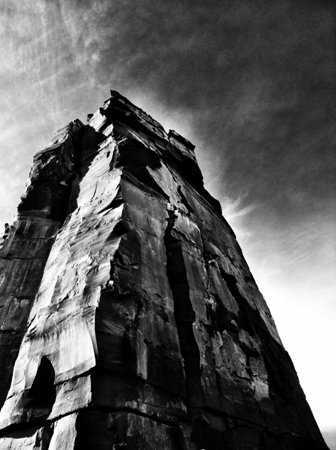 Wonderful, warm sandstone towered above us as we racked up for the north face of Castleton Tower. The day before my right big toe had been bothering me all day, especially on the thin hands pitches. As soon as I pulled my rock shoes on, I knew something was wrong. I had an Alaska trip in two weeks and didn’t want push things, so I took a nap in the sun and watched my friends and others have a blast playing on Castleton. (Photo: North face of Castleton Tower ©Doug Shepherd)
Wonderful, warm sandstone towered above us as we racked up for the north face of Castleton Tower. The day before my right big toe had been bothering me all day, especially on the thin hands pitches. As soon as I pulled my rock shoes on, I knew something was wrong. I had an Alaska trip in two weeks and didn’t want push things, so I took a nap in the sun and watched my friends and others have a blast playing on Castleton. (Photo: North face of Castleton Tower ©Doug Shepherd)
Fast-forward a few months and between our first ascent on Mt. Dickey and training for the Speedgoat 50K race, I’ve ruined what cartilage I had left in my right big toe. I finally meet with Dr. Clanton at the Steadman Clinic in Vail, Colorado about fixing my toe. He assured me they knew how to fix me right up and we scheduled my surgery for the end of August. I pushed through the pain to finish the Speedgoat and hobbled into surgery unable to move my toe more than five degrees up or down.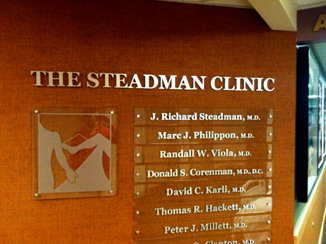
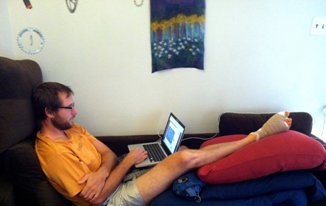
After my surgery, my wife was nice enough to drive me back and forth to Vail from our home in Northern New Mexico for follow-ups and help me figure out how to shower without getting my foot wet. I think she took a bit too much pleasure in taping the plastic bags to my leg as I lost quite a bit of hair each time I showered, quickly leaving me content to lie on the couch working and watching climbing movies on my laptop. (Photos: The magic workers (top). Pretending to work during recovery (bottom). ©Doug Shepherd)
After a few weeks and more 12 hour round trips to Vail, I had my stitches out and was gimping around on crutches. Another 2 weeks and I was able to wear a normal shoe and walk around at work. Right around that time, John Frieh texted me with his usual, “hey, they weather is looking kind of good in Alaska. What are you up to?” I wrote him off the first time, as I could barely walk without the crutches. Another week goes by and John texted me again, “are you sure you can’t wear ice boots?”
I immediately went out to the back yard and pulled my double boots out of the storage shed. Gingerly I try to pull on my right boot. The first attempt ends in almost blacking out and tears as I bend the toe too aggressively on the stiff insole. After a few minutes, I pull out the inner boot and put that on first. By angling my foot into the shell, I’m able to wiggle my foot into the boot with a bearable amount of pain. I quickly pull on my other boot, walk outside and climb on my system board a bit. Seems good enough, as long as we don’t climb anything too technical. I text John back that I’m in and the usual weekend ninja alpinism plans are formed. It just so happens that the weather window falls right after 6 weeks post-surgery, the arbitrary timeline my doctor’s gave me to resume “full-activity”.
(Photo: Burkett Needle and Mt. Burkett ©Doug Shepherd) I fly to Seattle from Albuquerque on Thursday night and John picks up me at the airport. We crash at a friend’s house, but not before John pulls out a pair of baby blue NW Alpine Neoshell salopettes I had asked to borrow from NW Alpine since they are significantly more waterproof than my green power pants that NW Alpine had made for our Mt. Dickey trip. I’m excited by the prospective of combining these with my orange Big Four jacket, mostly because of the excited color combinations (blue and orange, yes please!) but also because I know the design of the pants is excellent and the Neoshell will keep me dry no matter what conditions we encounter.
(Photo: Way too happy to be back in the spooner bag. ©Doug Shepherd) On Friday morning, John and I fly from Seattle to Petersburg and after coffee at Dieter Klose’s house, a quick shopping trip, and the usual junk show of packing Wally, our helicopter pilot, has us on the glacier by early afternoon. Because John has been here before, he knows exactly where we need to go and we are relaxing at the bivy site shortly after dark. My toe had responded reasonably to slogging up the talus slope, but I still was nowhere near healthy and definitely worried about the next day. Thankfully, we had brought along the two-person sleeping bag again, so I got to cuddle up to John and try to sleep for a few hours before our early start.
We negotiate the broken Burkett glacier, with a bit of antics to connect the lower and upper glacier and quickly find ourselves below the access couloir to the Mt. Burkett-Burkett Needle col. I take off leading, the first time I’ve found myself in any sort of climbing situation since my toe surgery. We simul-climb to the col and drop down to where we can access the NW face of Mt. Burkett. The face takes roughly four long simul-climbing blocks between John and myself, unraveling quite nicely with moderate ice and mixed climbing in an amazing position. The only worry during the day, besides the building pain in my toe, is the wind on the upper North face. At times, it was strong enough to blow our arms back as we tried to swing our ice tools. We eventually emerged from the north face into the sun on the East Ridge and make our way to the summit. (Photo: Rocking the baby blue below the Burkett col ©John Frieh)
Neither of us was willing to stand up on the summit, as the wind would have been blown us to Canada. After the wonderful belly crawl that compromised our summit experience, we begin the descent down the Golden Gully, a couloir splitting the Southwest aspect of Mt. Burkett. 6 or 7 rappels lead us to the lower angle snow compromising the lower portion of the Golden Gully and we down climb that to the glacier. At this point, my toe is hindering my ability to front point, so I am fairly slow down climbing and thankful that John is waiting for me just around every corner. (Photo: John Frieh on the upper ice fields of Mt. Burkett’s northwest face ©Doug Shepherd)
Reversing our glacier shenanigans from the morning goes quickly and we are soon enjoying another dinner of ramen and preparing for an evening of cuddling. My foot is desperate for a break from my boots by the time we reach camp and I am pretty worried about the walk down to the helicopter pick-up point the next day. Thankfully, the next morning comes and I’m able to wear my boots and the walk to our cache and pick up point goes very easily. Within 24 hours I’m back in New Mexico, completing a first ascent during a long weekend break from work. (Photo: John Frieh and myself standing just below the summit of Mt. Burkett. ©Doug Shepherd)
Thanks again to NW alpine for making quality alpine climbing clothing. The Neoshell fabric kept me dry while breathing and blocking the crazy wind we encountered. These quick alpine trips require the weather, your fitness, and other factors to line up just right for success. Because I knew I wouldn’t have to worry about my clothing system working, I was able to better focus on keeping my toe pain free and making a successful, and safe, first ascent of Can’t Knock the Hustle with my partner, John Frieh.
